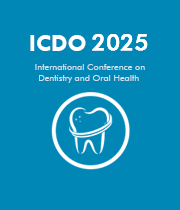Title: Adhesion performance of 3D-Printed and milled titanium alloys to zirconia-based materials
Abstract:
Background: Titanium alloys and zirconia are commonly employed in dental implants and restorations. While CAD/CAM technologies like milling and 3D printing have improved their manufacturing processes, the bonding strength between titanium abutments and zirconia crowns fabricated through different digital techniques remains underexplored.
Objective: This study aimed to evaluate the bond strength and long-term stability of titanium alloys joined with zirconia-based materials fabricated through both additive and subtractive digital manufacturing techniques
Methods: Two groups of titanium alloys (N=20) and two groups of zirconia ceramics (N=60) were fabricated using CAD-CAM milling from prefabricated discs (Ti-ML and Zr-ML) and 3D printing via selective laser melting (SLM) for titanium (Ti-3D) and DLP/LCM systems for zirconia (Zr-3D). These materials were bonded together using dental cement to create four experimental groups: Zr-ML/Ti-ML, Zr-ML/Ti-3D, Zr-3D/Ti-ML, and Zr-3D/Ti-3D. To evaluate the impact of aging, half of the specimens in each group underwent thermocycling. The study assessed density, microhardness, surface morphology, shear bond strength, and failure modes. Statistical analysis was performed using one-way ANOVA followed by Tukey’s HSD test to determine significant differences among the group
Results: The 3D-printed specimens of both titanium and zirconia demonstrated greater microhardness and surface roughness compared to their milled counterparts. Among the tested combinations, the Ti-ML/Zr-ML group exhibited the highest shear bond strength (SBS) both before and after thermocycling, and showed a higher incidence of cohesive failure. In contrast, the Ti-3D/Zr-ML group recorded the lowest bond strength.
Conclusion: The strongest adhesion between titanium and zirconia-based materials was observed when both components were produced using subtractive manufacturing methods. This was followed by combinations where both were fabricated additively, while mixed-method pairings showed comparatively weaker bonding.



